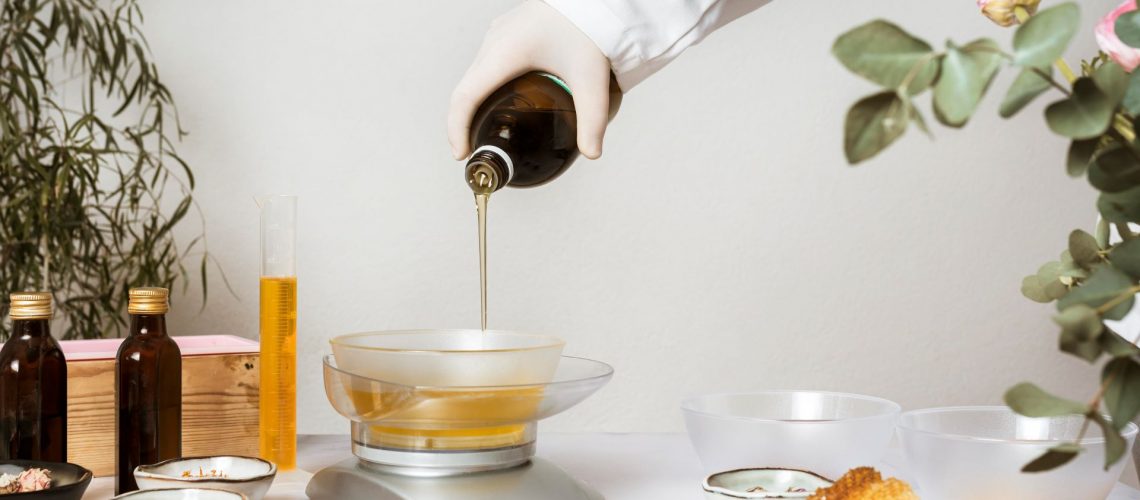Dating back to 2800 B.C., lye soap is the oldest soap known to mankind. Lye is traditionally derived by leaching, a process of percolating wood ashes in water then skimming the liquid lye off the top after the ashes have sunk to the bottom of the container. Lye comes in two different metal hydroxides: sodium hydroxide (NaOH), and potassium hydroxide (KOH). Sodium hydroxide (lye) is used to create bar soaps, while potassium hydroxide (potash), a more water-soluble metal hydroxide, is used to create liquid soaps.
All soap products need abrasives, known as alkalis, to ‘scrub’ away dirt, grease, and grime. Lye is a very effective carbon-based alkali, which is great for cleaning, but very hard on skin and clothing. To protect skin and other materials from the abrasive effects of lye, it is necessary to add fat in the forms of oils and butters to soap recipes. In this process, called saponification, triglycerides react with lye to produce glycerol and a fatty acid (soap). The fat not only protects skin and other materials from too much abrasion, but also adds more water-solubility to the soap, assisting in its rinsing properties. The amount of fat required is determined using pH, a scale of 0-14, which indicates the acidic or alkaline levels in soaps as well as in other products. A balanced acidic pH is required to prevent barrier damage to the skin after soap usage. The acidic pH in soap is considered “balanced” when it is close to the natural acidic pH of skin, which is 5.5. Most soaps used for skin or clothing have a pH of 7-10, while soaps with a pH of 8 or 9 are available to those with sensitive skin.
A lot of inorganic chemicals, such as phosphates, are also added to soaps and detergents for various reasons. One is sodium phosphate, which neutralizes the hardness in water, keeping a detergent from acting on water’s calcium instead of acting on (cleaning) clothes. This is a good thing, but phosphates can also harm the environment. For example, detergent phosphates can produce algae blooms, which disrupt the balance of naturally occurring phosphates in bodies of water, harming aquatic life. In response, phosphates have been steadily reduced in detergents over the years. As a phosphate replacement, the greener, more natural abrasive, citric acid, is added to soaps and detergents. It neutralizes the hydroxide component in soaps and detergents, frees some of the fat content, and does not harm the environment in any way.
Other inorganic chemicals added to soaps and detergents are sodium perborate and hydroxyethyl cellulose. Sodium perborate provides detergents’ oxidizing effect and hydroxyethyl cellulose thickens soap, so it won’t rinse off before doing its work. Sodium carbonate performs both functions, acting as a cleaning agent and thickening the soap for a longer ‘dwell time’ so it will last until rinsed.
Noah Chemicals provides inorganic chemicals necessary for soap and detergent production as well as for countless other products used in peoples day-to-day lives. For more information about how Noah Chemicals can provide your business with high-purity chemicals you need in your day-to-day products, please click here to request a quote or call us at (888) 291-1186.




